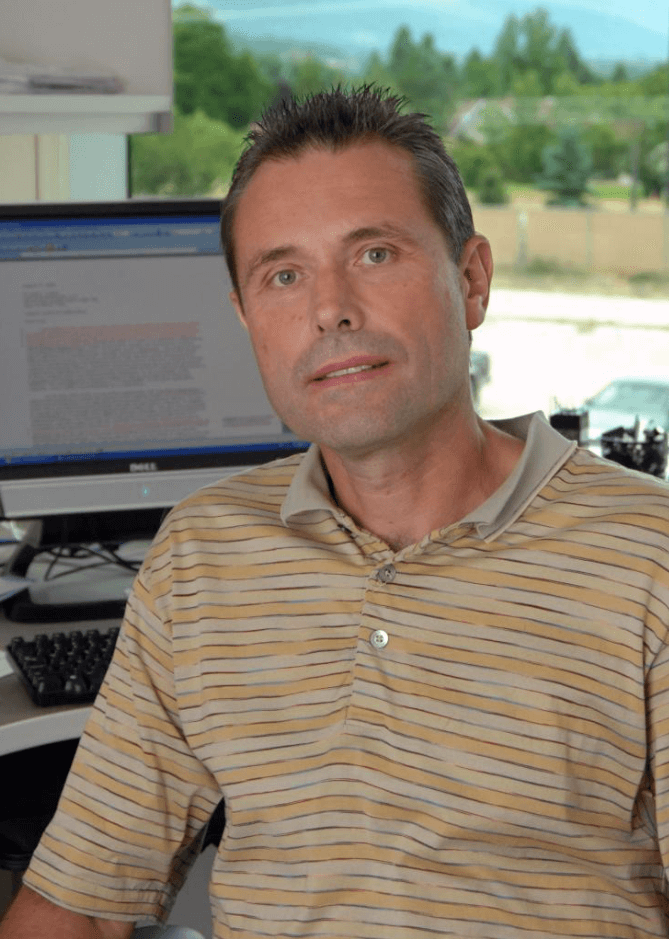The zoonosis everybody is talking about - The current Ebola outbreak demonstrates the necessity for zoonoses research

© bonezboyz - stock.adobe.com
Prof. Feldmann, one of the chairmen of the 7th International Conference on Emerging Zoonoses, is a laboratory expert on high containment viruses and serves as a consultant on viral hemorrhagic fevers and related pathogens for the World Health Organization. He has extensive field experience and is an expert in outbreak management.

Prof. Heinz Feldmann.
Prof. Feldmann, you were recently in Liberia, helping to fight the Ebola outbreak – what did you do exactly?
We offered diagnostic support and when we went to Monrovia we were sent to the new transit unit of MSF (Doctors without Borders), which is called ELSA 3. Led by the CDC, we conducted diagnostics for ELWA 3, which consists mainly of tents. It is a hospital – more or less – where people are tested for Ebola. And if they test positive, they are transferred to the section where Ebola patients are treated. If not, they are transferred to other hospitals.
How many samples did you test per day?
When I was there the first time, ELSA 3 had just started. On average we tested about 45 samples per day, but it varied from 20 to 70 or 80 samples. It usually takes about three hours until we obtain the results.
Did you expect that there would ever be an Ebola outbreak like this?
I didn’t expect it, but I wasn’t surprised, either. Of course, I wish that this had never have happened. Earlier outbreaks of Ebola always took place in very remote villages with almost no connections to big cities, which helped to contain the outbreak. I do believe that the mobility of the population, the comparatively well-developed infrastructure and the fact that these countries are relatively small, have been slightly underestimated. Nobody expected this and I think this is one of the main reasons why this outbreak is reaching an unprecedented scale. There are Ebola patients even in Monrovia, a relatively big city, with international traffic connections – for example, airplanes and ships – which makes this Ebola outbreak dangerous for countries in Europe and the USA as well.
Considering the experience that has been gained this time – do you think the next Ebola outbreak can be better contained?
I am not quite sure but I think it took three months to identify this Ebola outbreak. It is important that the next one is identified faster. But the question is: How to achieve this? Ebola has to be diagnosed by medical staff. But many of the hospitals are not run by doctors but by nurses and caregivers. Therefore, training has to be intensified to recognize Ebola as early as possible. But for this you need laboratory diagnostics. It is important to establish laboratory diagnostics in these countries so that they no longer have to depend on laboratories in Europe, North America or South Africa. This plays a key role in outbreak response. The sooner an Ebola outbreak can be identified, the better the response can be.
What is known about transmission of the Ebola virus from animal to human?
We still don’t know what the natural reservoir host for the Ebola virus is. It is thought that fruit bats are the natural Ebola virus host, but this has still not been proven because isolation of the virus from bats is still missing. I myself am convinced that bats are the reservoir host, but isolation of the virus needs to be done to be sure, and it would help to understand the manner in which the virus first appears in a human at the start of an outbreak.
What do you expect from the “Joint Conference: German Symposium on Zoonoses Research 2014 and 7th International Conference on Emerging Zoonoses”?
Exchange of experience, sharing of scientific data, communication, and collaboration. The German zoonoses network is very well developed. Actually, it is an excellent example for zoonoses networking worldwide. I wish it worked like this in other countries, too; and I really hope that funding for the network will continue. This conference comes at the right time, considering the ongoing Ebola virus and MERS coronavirus outbreaks and several other emerging and reemerging zoonotic diseases worldwide. This underlines the importance of zoonotic infections for global human and animal health. I think this will be a very fruitful conference at a perfect time and location. I hope the conference can also reach the attention of funding agencies and policy makers to secure funding for zoonotic diseases in future years.
How important are conferences like this today? With modern means such as teleconferences, Skype, email, etc. to communicate with colleagues – is there still a need to meet face-to-face?
I think it is extremely important to meet face-to-face but, unfortunately, this is often forgotten. Scientists definitely prefer personal exchange, but at the moment funding is difficult. Conferences are expensive, traveling is expensive and governmental institutions in particular are economizing drastically here, arguing that it is sufficient to communicate by telephone, Skype, etc. or to send only one person to a conference. In my opinion, this is not sufficient. Whenever I attend a conference by telephone I am astonished by the poor quality of the connection; sometimes it is nearly impossible to understand what is being discussed. If you are dependent on getting information by this means only, you get left out. There are some things you can do by phone or Skype, but I think it is a big mistake to replace a conference, a personal meeting, with this technology.
Prof. Feldmann, thank you for taking the time to talk to us.
The interview was conducted by Christina Sartori.


